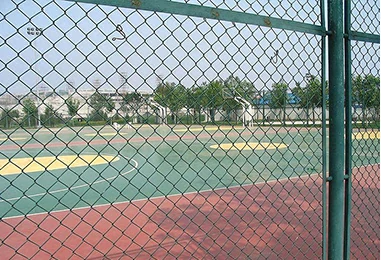 TEL:
+86-13102802206
TEL:
+86-13102802206
 Email:
fencenetting@china.com
Email:
fencenetting@china.com
 Language
Language
 TEL:
+86-13102802206
TEL:
+86-13102802206
 Email:
fencenetting@china.com
Email:
fencenetting@china.com
 Language
Language


The Importance of Good Temporary Fencing
When it comes to construction sites, events, and outdoor activities, the need for security and safety cannot be overstated. One of the most effective ways to provide this security is through the use of good temporary fencing. Temporary fencing serves as a crucial barrier that protects both the public and the property within its confines. As we delve into the various aspects of good temporary fencing, we will explore its benefits, types, and the critical factors to consider when selecting the right fencing solution.
Understanding Temporary Fencing
Temporary fencing is a type of fencing that is designed to be put up for a limited duration, typically for specific projects or events. It is often utilized at construction sites, public events like concerts or festivals, and even for crowd control at fairs and parades. The primary goal of temporary fencing is to provide a physical boundary that secures an area while simultaneously guiding the movement of people.
Benefits of Good Temporary Fencing
1. Safety and Security One of the main reasons for installing effective temporary fencing is safety. By cordoning off specific areas, temporary fences help prevent unauthorized access, minimizing the risk of accidents or injuries. This is particularly crucial in construction zones where heavy machinery and hazardous materials are present.
2. Liability Protection Using temporary fencing can also protect property owners from liabilities. If an accident occurs within a confined area, having adequate fencing can demonstrate that efforts were made to ensure safety and control access, which may mitigate legal repercussions.
3. Crowd Control For events that attract large crowds, temporary fencing is instrumental in maintaining order. It helps manage foot traffic, directs attendees to specific areas, and keeps unauthorized individuals out, ensuring a smooth flow of people and enhancing the overall experience.
4. Privacy Temporary fencing can provide a degree of privacy in situations where it is necessary. This is particularly important at events where sensitive information may be discussed, or during activities that require confidentiality.
5. Cost-Effectiveness Compared to permanent fencing solutions, temporary fencing is often more budget-friendly. Since it is designed for short-term use, businesses and event organizers can save substantial amounts by renting rather than purchasing.
Types of Temporary Fencing
The market offers a variety of temporary fencing options, each suited for different needs
. Some of the most common types include
1. Chain Link Fencing This is one of the most popular forms of temporary fencing. It offers excellent visibility and durability, making it ideal for construction sites. Chain link fences can withstand harsh weather conditions and provide robust security.
2. Wooden Fencing For those seeking privacy and an aesthetically pleasing option, wooden fences can be an excellent choice. They are often used for outdoor events and can be painted or styled to fit specific themes.
3. PVC Fencing Lightweight and easy to install, PVC fencing is another popular option. It is often used for crowd control at events and can be customized in various heights.
4. Barrier Fencing Commonly used for crowd control, these barriers are effective in directing foot traffic and creating safe queues. They are typically made of durable materials and are easily movable.
Factors to Consider When Choosing Temporary Fencing
When selecting the right temporary fencing solution, several factors should be taken into account
1. Purpose Determine the specific needs for fencing based on the type of event or project and choose accordingly.
2. Location Analyze the site where the fencing will be installed. Assessing the terrain and environmental conditions will help in selecting a suitable fencing type.
3. Duration The length of time the fence will be needed can influence the choice. For longer projects, more durable options may be warranted, while short-term needs can opt for cheaper solutions.
4. Local Regulations Always check local laws and regulations regarding temporary fencing to ensure compliance. This might include specific heights, materials, and design requirements.
In conclusion, good temporary fencing is integral for ensuring safety, providing security, and managing crowds at various sites. By understanding the types available and considerations for selection, individuals and organizations can make informed decisions that enhance the effectiveness of their projects and events. Whether it is for a construction site or an outdoor festival, investing in temporary fencing is a step towards creating a safe and organized environment.